Order Siphonaptera Higher classification Ctenocephalides | Scientific name Ctenocephalides canis Rank Species | |
 | ||
Similar Flea, Cat flea, Cat, Ctenocephalides, Human flea | ||
The dog flea (Ctenocephalides canis) is a species of flea that lives as an ectoparasite on a wide variety of mammals, particularly the domestic dog and cat. It closely resembles the cat flea, Ctenophalides felis, which can live on a wider range of animals and is generally more prevalent worldwide.
Contents
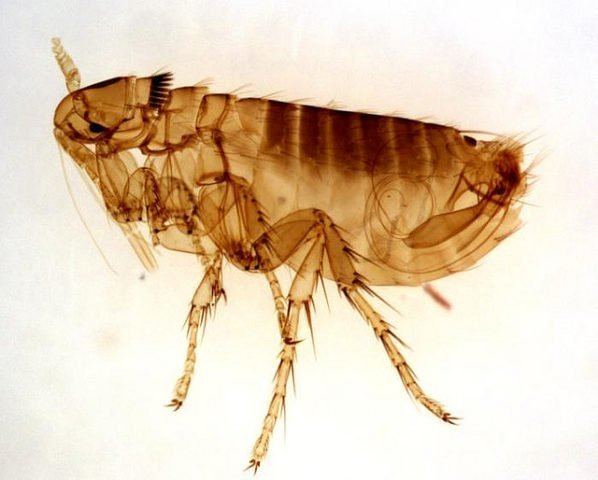
The dog flea is troublesome because it can spread Dipylidium caninum.
Although they feed on the blood of dogs and cats, they sometimes bite humans. They can live without food for several months, but females must have a blood meal before they can produce eggs. They can deliver about 4000 eggs on the host's fur. The eggs go through four lifecycle stages: embryo, larva, pupa, and imago (adult). This whole life cycle from egg to adult takes from two to three weeks, although this depends on the temperature. It may take longer in cool conditions.
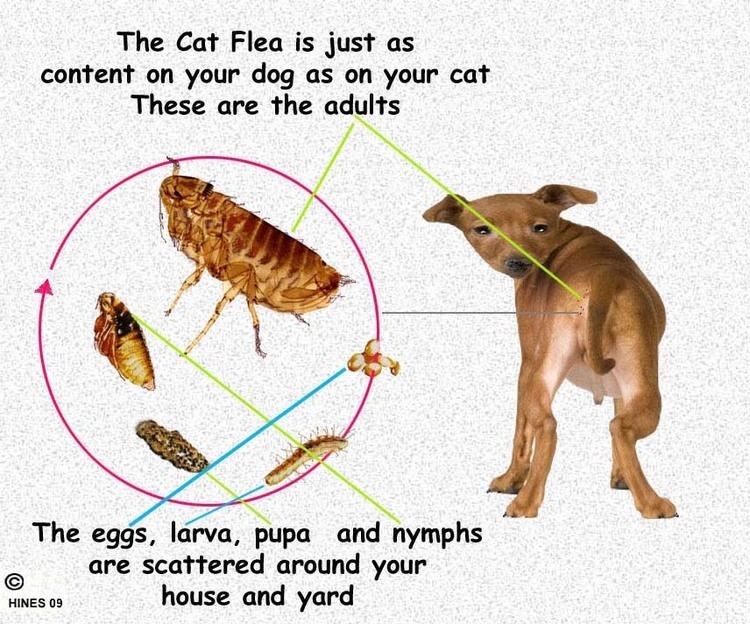
Anatomy
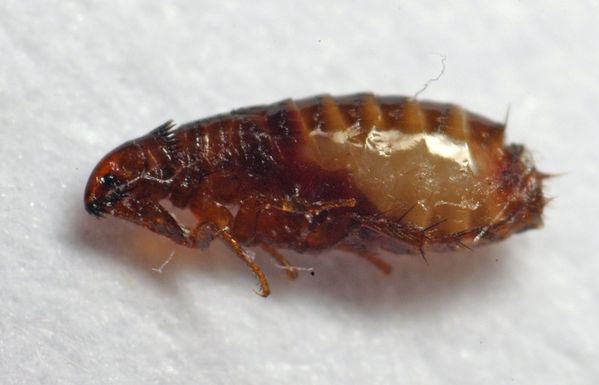
The dog flea's mouthparts are adapted for piercing skin and sucking blood. Dog fleas are external parasites, living by hematophagy off the blood of dogs. The dog often experiences severe itching in all areas where the fleas may reside.
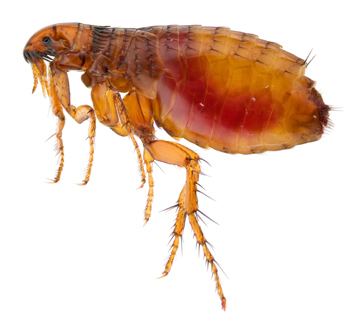
Fleas do not have wings and their hard bodies are compressed laterally and have hairs and spines, which makes it easy for them to travel through hair. They have relatively long hind legs for jumping.
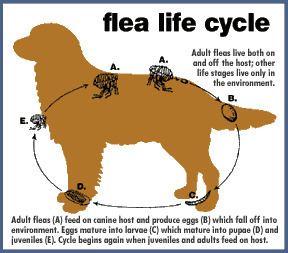
The dog flea can be distinguished from the very similar cat flea by its head, which is anteriorly rounded rather than elongate, and the tibiae of its hind legs, which exhibit eight setae-bearing notches rather than six.
Signs and symptoms

Flea infestations can be not only annoying for both dogs and cats and humans, but also very dangerous. Problems caused by fleas may range from mild to severe itching and discomfort to skin problems and infections. Anemia may also result from flea bites in extreme circumstances. Furthermore, fleas can transmit tapeworms and diseases to pets.
When fleas bite humans, they may develop an itching rash with small bumps that may bleed. This rash is usually located on the armpit or fold of a joint such as the elbow, knee, or ankle. When the area is pressed, it turns white.
When dogs are troubled by fleas, they scratch and bite themselves, especially in areas such as the head, neck, and around the tail. Fleas normally concentrate in such areas. This incessant scratching and biting may cause the dog's skin to become red and inflamed.
Flea allergy dermatitis is developed by those dogs allergic to flea saliva. In this case, the symptoms previously mentioned are more pronounced. Because of compulsive scratching and biting, the dog may lose hair, get bald spots, exhibit hot spots due to extreme irritation, and develop infections that result in smelly skin.
Prevention
Preventing and controlling flea infestations is a multi-step process. Prevention in the case of flea infestations can sometimes be difficult, but is the most effective way to ensure the dog will not get reinfected. Controlling flea infestations implies not only the pet has been cured and the fleas living on it are killed, but also that the environment in which the pet lives is free of these parasites. Of all these, removing the fleas from the pet may be the easiest and simplest step given the many products especially designed to kill fleas available on the market.
Every female flea on the pet is likely to have laid eggs in the environment in which the pet lives. Therefore, effective prevention and control of flea infestations implies having removed the fleas from both indoor and outdoor environments, from all pets, and keeping immature forms of fleas from developing.
Removing the fleas in indoor environments mainly consists of removing them mechanically. This can be done by a thorough vacuuming, especially in places where fleas are more likely to be found, such as below drapes, the place where the pet sleeps, and under furniture edges. Vacuuming can remove an estimated 50% of flea eggs. After vacuuming, using a specially designed product is recommended to kill the remaining fleas and to stop the development of eggs and larvae. The products available on the market may include carpet powders, sprays or foggers, which contain adult insecticides and insect growth regulators.
Special attention should be paid to the dog's bedding. This should be washed every week; also the bed and surrounding areas should be treated with adult insecticides and insect growth regulators. Cleaning should be done at the same time in the cars, garage, pet carrier, basement, or any other place where the dog is known to spend time.
Preventing flea infestations must include eliminating the parasites from the yard or kennel areas, the two places where fleas are most likely to occur. Dog houses, patios or porches are some of the outdoor areas in which it is more likely to find fleas and those should be thoroughly cleaned. Fleas can also be carried by wild animals, such as opossums, chipmunks and raccoons. One is recommended to discourage these wild animals from their property and pets by never feeding them.
Removing fleas from the pets is not a difficult task considering the advent of products which are designed not only to kill fleas, but also to offer protection from further infestations. Flea-control products are available in once-a-month topicals, dog collars, sprays, dips, powders, shampoos, and injectable and oral products. All these products contain an insecticide as an active ingredient which kills the fleas when coming into contact with them. Fleas absorb the insecticide which either paralyzes them or kills them.
A very important part of flea prevention is to persist with the same control measures for as long as possible. Though the cleaning process was successful, fleas in incipient stages likely still exist around the house or on the pet. The lifecycle of fleas can take up to six months, so maintaining the prevention measures for as long as half a year is recommended.
Treatments
To effectively get rid of fleas and flea eggs, one should treat not only dogs, but also the household and exterior regions to eliminate eggs from bedding, grass, floor, furniture and other areas.
Treatment should be given as soon as signs of fleas appear, and repeated regularly. Delays in treating the infestation may lead to flea-transmitted diseases.
Once-a-month topical products are the most commonly used products to kill parasite infestations. They are normally applied on the back of the pet, and their advantage is they also provide protection from further infestations. Sprays are available as aerosols and pump bottles, and they are meant to be applied on all parts of the pet. Dips and rinses are also available, but they are not as common as the other such products because they are the most dangerous for the health of the pet.
In 2009, the US Environment Protection Agency conducted an investigation into the reactions of many pets to topical flea products and released preliminary reports in the spring of 2010.
Also, different treatments are available for dogs from natural alternatives to chemical-based products that include topical medications and oral medications. Although common remedies provide natural options with natural ingredients such as lavender, pennyroyal, nenbuem, Amber and sweet mace, which are insect repellents, care should be used since "natural" does not always mean nontoxic.
Evaluations of the toxicity of flea treatment products have been scientifically studied and are available online from the Natural Resources Defense Council.
